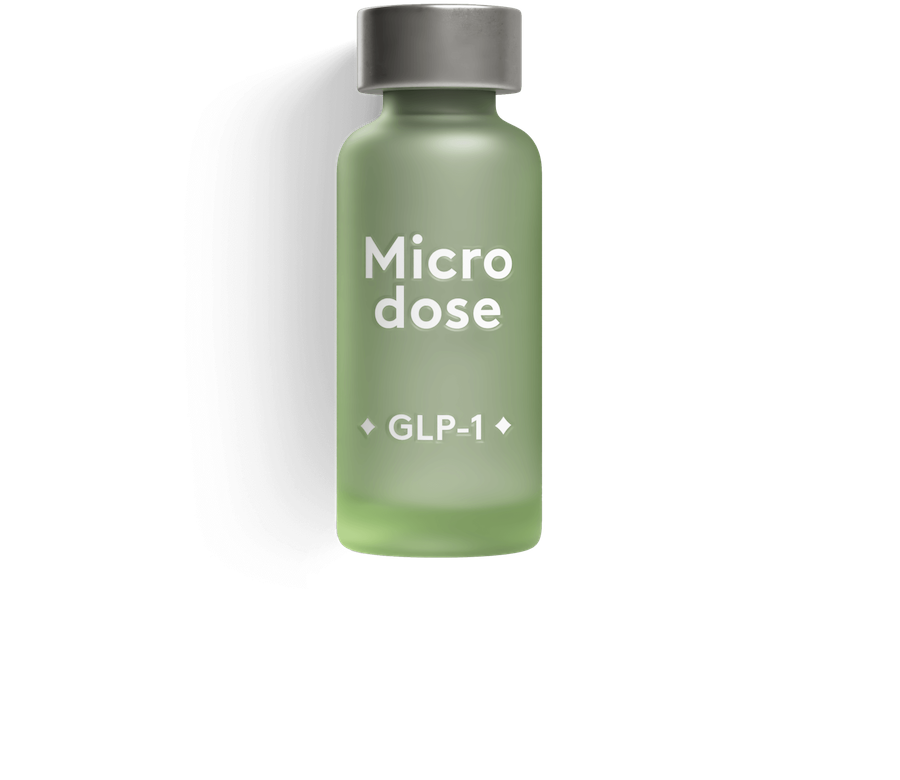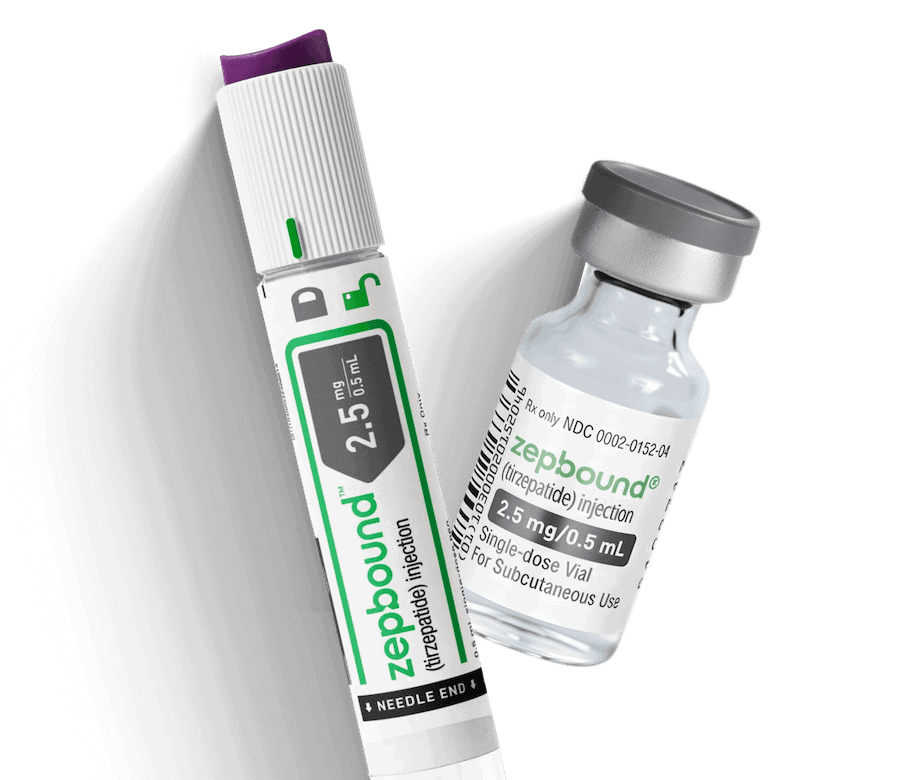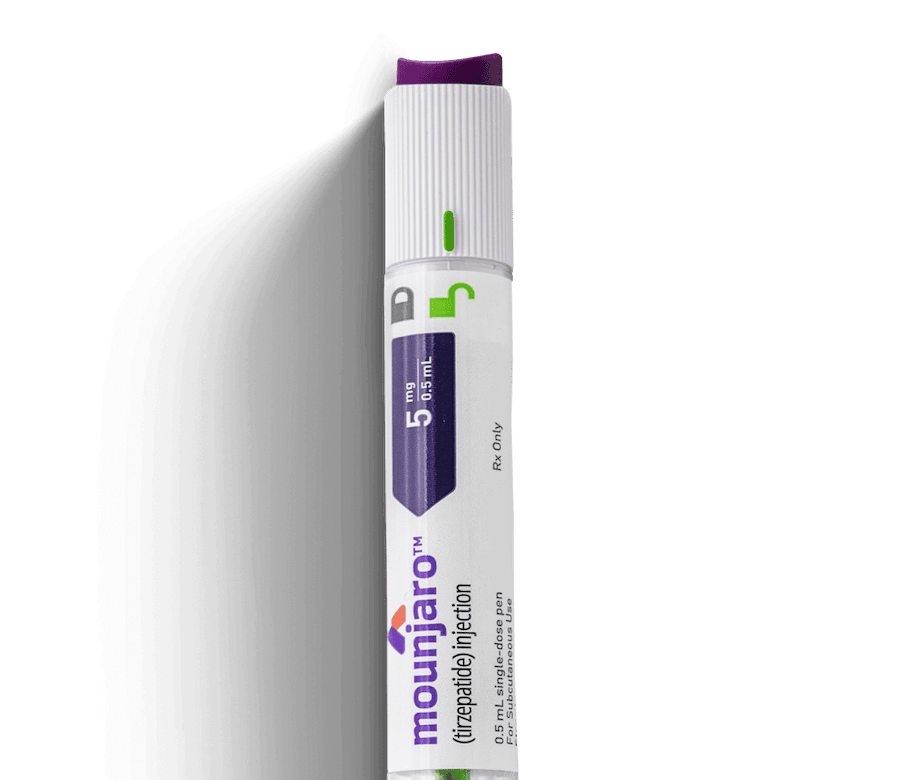What you’ll learn:
- As the first GLP-1 medication available in generic form, liraglutide may offer a more affordable option—especially as more manufacturers enter the market—but comfort with side effects and daily dosing are key.
- Generic liraglutide works just like Victoza® to lower blood sugar and appetite, with common side effects like nausea and constipation, most likely when starting or increasing the dose.
- While generally considered safe, generic liraglutide carries rare risks like pancreatitis and gallbladder problems, so it’s important to stay in touch with your provider.
While most people are familiar with Ozempic® (semaglutide) for treating type 2 diabetes and for off-label weight loss, liraglutide and the medications that contain it are less well known. But they work in very similar ways. Like semaglutide, liraglutide is a GLP-1 receptor agonist, meaning it mimics the GLP-1 hormone in the body. This action helps regulate blood sugar, lower appetite, and slow digestion, supporting both diabetes control and weight loss.
Sold under the brand names Victoza® (for diabetes) and Saxenda® (for weight loss), liraglutide differs from newer GLP-1s in one key way: it’s taken as a once-daily injection, rather than weekly. It’s also the first GLP-1 to be offered as a generic, making it potentially more affordable, though the actual cost depends on your insurance, diagnosis, and pharmacy. Here’s a breakdown of what generic liraglutide may cost.
Teva Pharmaceuticals launched the first authorized generic in June 2024—the first GLP‑1 available as a generic in the U.S. Since then, Hikma Pharmaceuticals has released its own branded generic, and companies like Viatris and Sandoz are expected to follow. As more generics become available, access and affordability may continue to improve.
Rx weight-loss, the right way, with Noom
Get access to prescription weight loss medication with Noom.Side effects for generic liraglutide are the same as those of Victoza. Nausea, vomiting, diarrhea, and constipation are the most common symptoms, especially when starting treatment. But there are things you can do to help your body adjust.
Let’s go through the side effects you can expect with generic liraglutide, including why they happen and tips to manage them.
Sign up for Noom Digest!
Stay on top of your wellness journey with the latest Noom news, thoughtful articles, and a healthy dose of inspiration delivered right to your inbox.How generic liraglutide works and why side effects happen
Generic liraglutide works exactly like Victoza® because it’s the same medication in the same doses. Because it changes how your body processes food, it’s common to feel some side effects—especially in the first few weeks—as your system adjusts.
Here’s what it’s doing in your body (and how that may feel):
- Slows digestion: Liraglutide delays how quickly food leaves your stomach. This helps you feel full longer, but the slower emptying can also trigger nausea, bloating, vomiting, or constipation—especially if meals are large or fatty.
- Lowers appetite: By signaling fullness sooner and more strongly, liraglutide helps reduce how much you eat. But early on, this can sometimes make you dizzy or cause fatigue, especially if you’re eating too little.
- Stabilizes blood sugar: Liraglutide blunts the usual spikes and crashes after meals. This is helpful for energy and cravings, but if your blood sugar dips too low (especially if you’re also taking other diabetes medications), you may experience lightheadedness, shakiness, or irritability.
These effects usually lessen as your body gets used to the medication. Small changes to what, when, and how you eat can also go a long way in easing symptoms—and we’ll cover those next.
When are side effects most likely with generic liraglutide?
Most people feel the strongest side effects when they first start generic liraglutide or when their dose increases. These reactions often ease up as your body adjusts to the medication.
That’s why slow dose escalation is built into the standard prescribing schedule. By gradually increasing the dose, your body has time to adapt to changes in digestion, appetite signals, and blood sugar regulation, reducing the likelihood or severity of side effects.
Here’s the typical dosing schedule used to help minimize discomfort:
- Start with 0.6 mg once daily (week 1): This helps your body get used to the medication before increasing the dose.
- Increase to 1.2 mg once daily (week 2 and beyond): This is the most common long-term dose for managing type 2 diabetes.
- If needed, raise to 1.8 mg once daily: If blood sugar control isn’t where it needs to be and you’re managing the side effects well, your provider may recommend going up to the max dose.
Each step allows your body to ease into the medication’s effects. Your provider will work with you to find the most comfortable pace.
Generic liraglutide: Most common side effects
Digestive symptoms are the most commonly reported with generic liraglutide.
Here’s a quick look at how often these symptoms showed up in clinical trials for liraglutide, and some ways to manage them while your body adjusts.
| Symptom | Liraglutide (1.2 mg) | Liraglutide (1.8 mg) | What can help |
|---|---|---|---|
| Nausea | 18% | 20% | Eat light meals in smaller portions. Greasy foods may make nausea worse. |
| Diarrhea | 10% | 12% | Keep fluids coming and try bland foods like toast, rice, or bananas. |
| Vomiting | 6% | 9% | Sip on clear liquids and stick to bland meals when symptoms hit. |
| Constipation | 5% | 5% | Add fiber gradually, move around during the day, and don’t forget to hydrate. |
| Dyspepsia (indigestion) | 4% | 7% | Eat slowly and avoid lying down after meals. Give your stomach time to settle. |
If you notice symptoms lasting longer than a few weeks or they’re starting to bother you more than expected, talk to your provider about how to adjust your routine or dosing.
Other side effects of taking generic liraglutide
While digestive issues are common, generic liraglutide has been associated with other side effects, too. These are usually mild and manageable, and tend to lessen with use.
| Symptom | Liraglutide (1.2 mg) | Liraglutide (1.8 mg) | What can help |
|---|---|---|---|
| Headache | 11% | 10% | Stay hydrated and take breaks from screens or bright lights during the day. |
| Nasopharyngitis (cold-like symptoms) | 9% | 10% | Rest when needed and try a saline spray or lozenges for mild relief. |
| Upper respiratory tract infection | 7% | 6% | Keep up fluids and stay home if symptoms worsen or linger. |
| Back pain | 4% | 5% | Gentle stretching, heating pads, and posture support can offer relief. |
These side effects were observed in clinical trials, but not everyone will experience them. Also, back pain and mild infections are not proven to be directly caused by liraglutide, but they’ve been reported often enough to keep on your radar.
Cardiovascular symptoms
Some people taking liraglutide will notice a slight increase in resting heart rate, about 2 to 3 beats per minute. This is consistent with Victoza® studies and isn’t usually considered dangerous, but it’s still something to mention to your provider if it feels persistent or uncomfortable.
You might want to:
- Track when and how often your heart feels fast or pounding
- Bring it up during your regular check-ins
- Seek earlier care if symptoms are frequent or interfere with daily life
Injection site reactions
Like many injectables, generic liraglutide can occasionally cause mild skin irritation where the shot is given. These reactions usually go away quickly and are most common when you’re getting used to the routine.
| Reaction | What it means | What can help |
|---|---|---|
| Redness or swelling | A small patch or bump at the injection site | Rotate sites often and avoid using the same area repeatedly. |
| Itching or irritation | Temporary tingling or mild discomfort | Clean and dry the skin before injecting. Avoid scratching the area. |
| Tenderness or bruising | Slight soreness or bruising after injection | Press gently on the spot after the shot, but don’t massage it. |
Most people find that these reactions become less noticeable and easier to manage with time. If you notice signs of infection, like pus, spreading redness, or fever, contact your healthcare provider right away.
What to expect if you stop taking generic liraglutide
Generic liraglutide is designed for ongoing use, especially for managing type 2 diabetes. But if you stop taking it, whether intentionally or because of side effects, you may notice some shifts in how your body feels and functions.
Here’s what can happen:
- Appetite and cravings may return: Like Victoza®, generic liraglutide works by slowing digestion and curbing hunger signals. Once you stop, those appetite-suppressing effects can wear off quickly.
- You may regain weight: Without the appetite-suppressing effects of liraglutide, weight regain is possible, particularly if healthy lifestyle habits haven’t been established.
- Blood sugar may rise: If you’re using generic liraglutide to manage diabetes, stopping the medication may increase your blood sugar levels. Your provider may recommend another medication or adjust your care plan accordingly.
- Tapering usually isn’t required: As with Victoza®, generic liraglutide does not require a formal taper, but easing off with a clear plan (especially around food habits) can make the transition smoother.
If you’re considering pausing or stopping generic liraglutide, talk it through with your provider. A clear plan can make all the difference in keeping things steady and manageable.
Side effects in females: Are there any differences?
Generic liraglutide, like Victoza®, isn’t labeled with specific side effects for females, but hormonal differences may affect how it feels day to day.
- Hormonal shifts from weight loss may change your cycle: Irregular periods, lighter or heavier flow, or spotting have been reported, though the likely cause is rapid weight loss, not a GLP-1 directly.
- Nausea might feel stronger or last longer: Research on GLP-1 side effects points to women being more likely than men to report nausea and vomiting, especially early in treatment. This may relate to differences in hormone levels, GI motility, or sensitivity during certain phases of the menstrual cycle.
- Ovulation may become more regular: If you’ve struggled with irregular cycles or conditions like polycystic ovary syndrome (PCOS), you might notice improved fertility as your hormones rebalance with weight loss and improved insulin sensitivity. A study on liraglutide and PCOS showed that the medication helped improve ovulation rates and reproductive hormone levels in women with the condition.
If you’re planning pregnancy or actively trying to conceive:
- Stop taking liraglutide at least two months before trying to get pregnant.
- Avoid using it during pregnancy or while breastfeeding.
- If you’re taking oral birth control, check with your provider. The medication may affect how it’s absorbed.
As always, if you notice any cycle changes or have questions about fertility, it’s best to check in with your provider. They can help guide you based on your goals and overall health.
Generic liraglutide: Safety information and warnings
While most people tolerate liraglutide well, some serious risks are possible. It’s important to know what symptoms to watch for so you can act quickly if needed.
Seek medical help immediately if you experience:
- Pancreatitis: Symptoms include sudden, intense stomach pain, especially if it moves to your back, that may come with nausea or vomiting.
- Gallbladder issues: Warning signs include pain in your upper right abdomen, fever, nausea, or yellowing of your skin or eyes.
- Kidney problems: Dehydration from vomiting or diarrhea can affect your kidneys. You might feel very tired, swollen, or notice changes in how often you urinate.
- Severe allergic reactions: Call for emergency help if you have facial swelling, hives, difficulty breathing, or a widespread rash.
- Low blood sugar (hypoglycemia): Common symptoms include shakiness, dizziness, sweating, or feeling confused. This is more likely if you’re also on insulin or sulfonylureas.
- Thyroid tumors: Animal studies on liraglutide showed a risk of thyroid C-cell tumors, so generic liraglutide carries the same boxed warning as Victoza®. Get immediate medical attention if you notice a lump in your neck, voice changes, or trouble swallowing.
Who shouldn’t take generic liraglutide?
Before starting liraglutide, review your complete medical history and current medications with your healthcare provider. They’ll help you weigh the risks and decide whether this medication is a safe fit for your needs.
Avoid using generic liraglutide if you:
- Have a personal or family history of medullary thyroid carcinoma (MTC)
- Have multiple endocrine neoplasia syndrome type 2 (MEN 2)
- Are pregnant, trying to become pregnant, or breastfeeding
- Have had a severe allergic reaction to liraglutide or any of its ingredients
Talk to your doctor about whether liraglutide is right for you if you:
- Have a history of pancreatitis
- Have digestive conditions like gastroparesis, which affects how your stomach empties
- Are using insulin or sulfonylureas, as the combination can increase your risk of low blood sugar
Comparing side effects: Generic liraglutide vs. other GLP-1 medications
GLP-1 medications all help regulate blood sugar and appetite, but the likelihood of side effects can vary, especially at higher doses. If you’re taking generic liraglutide, it helps to see how its side effect rates compare with other options.
| Medication | Nausea | Vomiting | Diarrhea | Constipation | Key differences |
|---|---|---|---|---|---|
| Liraglutide – Generic/ Victoza® – 1.8 mg daily | 20% | 9% | 12% | 5% | Higher doses of liraglutide are linked to higher rates of nausea and diarrhea compared to lower doses. |
| Liraglutide – Generic/ Victoza® – 1.2 mg daily | 18% | 6% | 10% | 5% | Lower dose liraglutide is associated with fewer side effects, compared to 1.8 mg. |
| Semaglutide(Ozempic®) – 1 mg weekly | 20% | 9% | 9% | 3% | Ozempic had similar rates of nausea and vomiting compared to liraglutide; lower diarrhea and constipation rates. |
| Semaglutide (Rybelsus®) – 14 mg daily | 20% | 8% | 10% | 5% | Rybelsus had similar nausea and constipation rates compared to liraglutide, slightly lower vomiting and diarrhea rates. |
| Tirzepatide (Mounjaro®) – 15 mg weekly | 18% | 9% | 17% | 7% | Tirzepatide has lower nausea, similar vomiting, but higher diarrhea and constipation rates compared to liraglutide. |
| Dulaglutide (Trulicity®) – 4.5 mg weekly | 16% | 9% | 11% | Not reported | Dulaglutide had lower rates of nausea and diarrhea compared to liraglutide; vomiting rates are similar. |
These side effect rates reflect the highest studied doses. Your personal experience may vary depending on how your body adjusts or how quickly your dose is increased.
Managing generic liraglutide side effects
Generic liraglutide offers the same benefits as its brand-name counterpart, Victoza®, with the potential for lower cost and broader access. As more manufacturers bring generics to market, this daily GLP-1 medication may become a more practical option for people managing type 2 diabetes or exploring off-label weight loss support.
Still, like all GLP-1s, it comes with side effects like nausea, constipation, and fatigue. Understanding why these symptoms happen and having strategies to manage them can make the process feel more manageable.
If you’re just starting generic liraglutide or thinking about it, see if you qualify for Noom Med. You’ll be paired with a licensed clinician who can assess whether medication is right for you and prescribe it if needed. Then they’ll help you manage side effects, make confident decisions about your treatment plan, and stay focused on your long-term health goals.
Note: Ozempic®, Mounjaro®, Victoza®, Trulicity®, and generic liraglutide are not FDA-approved for treating obesity or weight loss.
Why you can trust us
At Noom, we’re committed to providing health information that’s grounded in reliable science and expert review. Our content is created with the support of qualified professionals and based on well-established research from trusted medical and scientific organizations. Learn more about the experts behind our content on our Health Expert Team page.











